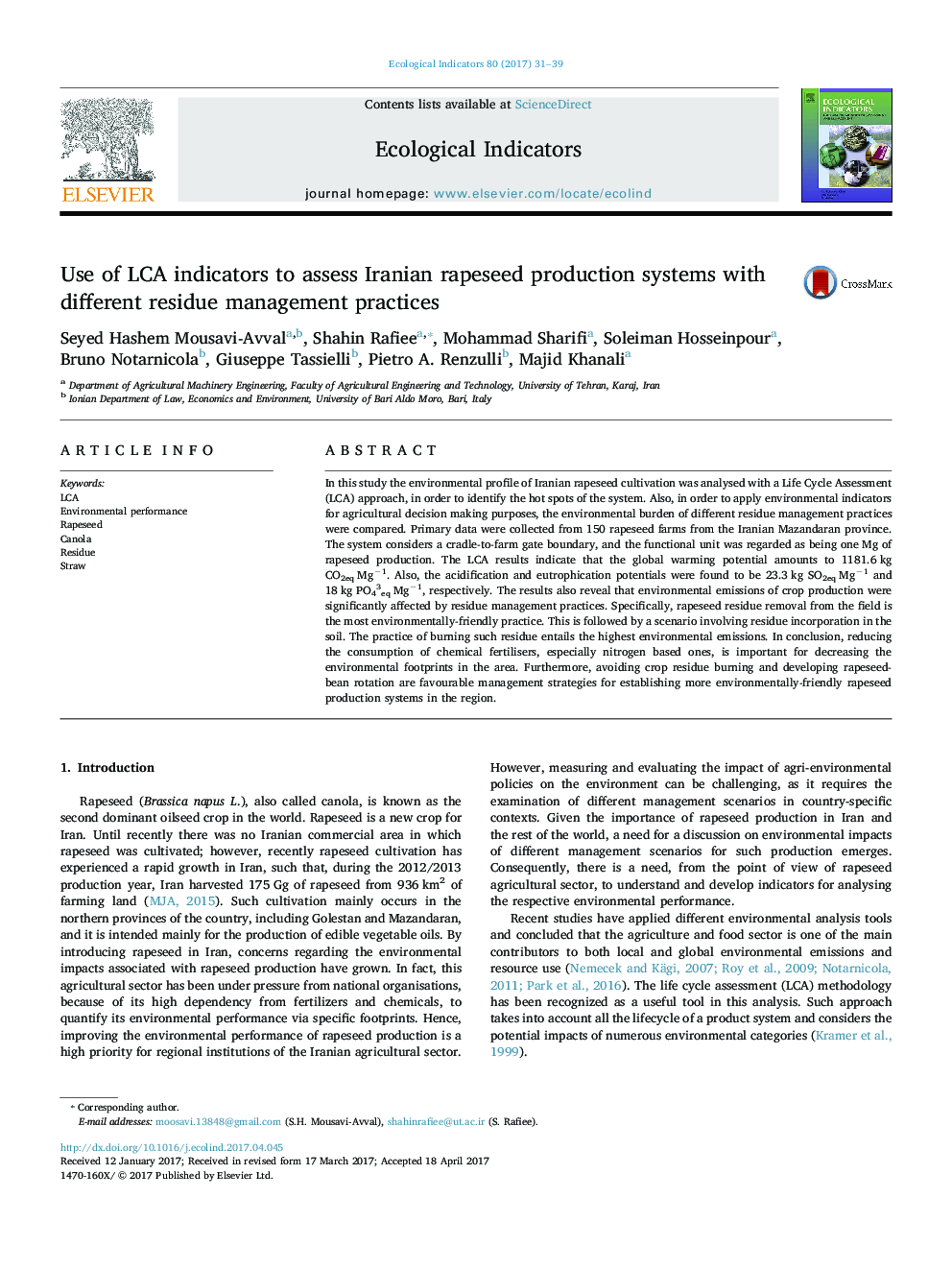| Article ID | Journal | Published Year | Pages | File Type |
|---|---|---|---|---|
| 5741365 | Ecological Indicators | 2017 | 9 Pages |
Abstract
In this study the environmental profile of Iranian rapeseed cultivation was analysed with a Life Cycle Assessment (LCA) approach, in order to identify the hot spots of the system. Also, in order to apply environmental indicators for agricultural decision making purposes, the environmental burden of different residue management practices were compared. Primary data were collected from 150 rapeseed farms from the Iranian Mazandaran province. The system considers a cradle-to-farm gate boundary, and the functional unit was regarded as being one Mg of rapeseed production. The LCA results indicate that the global warming potential amounts to 1181.6 kg CO2eq Mgâ1. Also, the acidification and eutrophication potentials were found to be 23.3 kg SO2eq Mgâ1 and 18 kg PO43eq Mgâ1, respectively. The results also reveal that environmental emissions of crop production were significantly affected by residue management practices. Specifically, rapeseed residue removal from the field is the most environmentally-friendly practice. This is followed by a scenario involving residue incorporation in the soil. The practice of burning such residue entails the highest environmental emissions. In conclusion, reducing the consumption of chemical fertilisers, especially nitrogen based ones, is important for decreasing the environmental footprints in the area. Furthermore, avoiding crop residue burning and developing rapeseed-bean rotation are favourable management strategies for establishing more environmentally-friendly rapeseed production systems in the region.
Related Topics
Life Sciences
Agricultural and Biological Sciences
Ecology, Evolution, Behavior and Systematics
Authors
Seyed Hashem Mousavi-Avval, Shahin Rafiee, Mohammad Sharifi, Soleiman Hosseinpour, Bruno Notarnicola, Giuseppe Tassielli, Pietro A. Renzulli, Majid Khanali,
